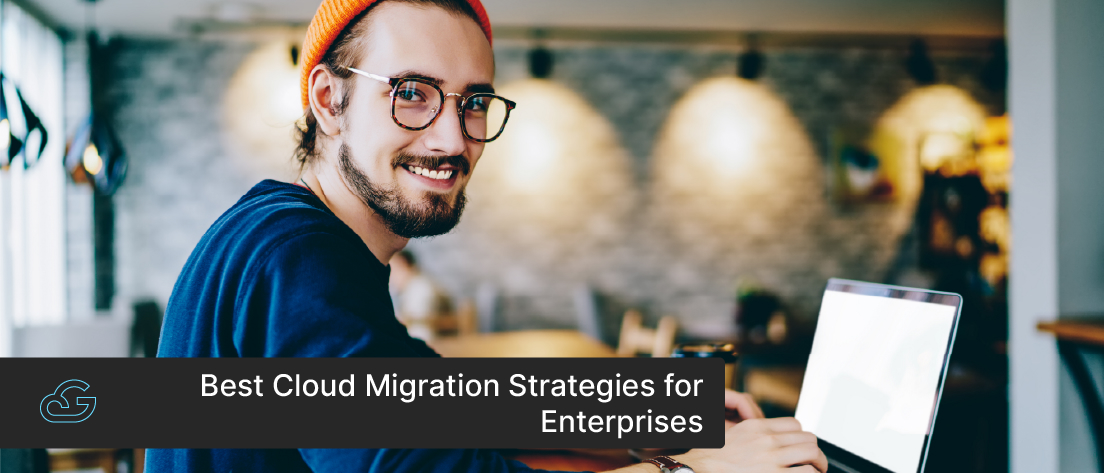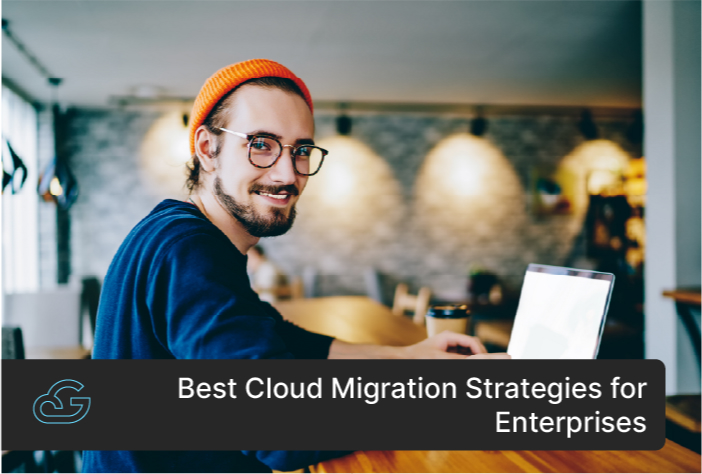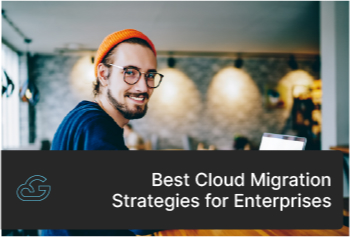Blogs / Cloud Migration
Best Cloud Migration Strategies For Enterprises
By
Sibin Vincent
Posted: January 3, 2022
• 4 Min Read
Once, you are ready with a cloud migration plan, you will have to select a cloud service provider with the desired level of expertise. This would also be the right time for you to lock in on a public, private or hybrid cloud based on your organization’s unique needs. You would also need to shortlist the cloud computing services offered by your provider which is a mix of IaaS, PaaS, and SaaS services. As a next step, you would need a robust execution strategy. Gsoft is your ideal cloud partner who can help you with the right strategy tailor-made for your business needs.
Let’s look at some of the common cloud migration strategies and what they entail.
Cloud Migration Strategies
- Re-Hosting (Lift and Shift)
-
When you are looking at a legacy migration scenario for a large enterprise that involves scaling up quickly with minimal optimizations to meet a fixed deadline.
-
When you are new to the cloud and want to migrate an off-the-shelf application.
- Re-Platforming (Lift, Tinker and Shift)
-
When your organization requires service delivery enhancement through modernizing your complex legacy application.
- Re-purchasing (Drop and Shop)
-
If your current application is incompatible with cloud environments and is difficult to re-platform, re-host, or strictly adhere to SLAs.
- Re-factoring (Re-architecting)
-
Your organization wants to leverage advanced cloud capabilities such as serverless. computing and auto-scaling which is otherwise difficult to achieve with legacy application architecture.
- Retaining (Hybrid Model)
-
You are invested heavily in the on-premises application and are unable to make a full switch.
-
Your organization is in the process of a large-scale migration that may take many years.
- Retiring
-
If your app is obsolete and redundant and has no productive value.
-
If your app has not been accessed or is down for an extended period.
This strategy offers faster ROI and cost savings with minimal risk. It involves moving your data and applications from on-premises architecture to a cloud environment without any significant modifications to the underlying code or system architecture.
Application scenarios:
In addition to the standard ‘Lift and Shift’, this approach also entails certain optimizations to the components of the application such as OS, API, and middleware to derive cloud benefits without refactoring the core application architecture. An example would be upgrading your application’s core database management system and moving it to the cloud to run as a fully managed service. This approach helps you add new components to the application to improve performance and security while being cost-effective.
Application scenarios:
Moving with this strategy involves replacing your on-premises applications integrated with a cloud-native third-party SaaS platform that has similar capabilities. Replacing software for standard functions such as accounting, finance, HRM, CRM, CMS, and Email are some good examples of this. Essentially, this requires a licensing model where your solution gets integrated with other vendor solutions. This newly cloud-enhanced version of your application offers higher efficiency, storage, savings, and lower maintenance cost.
Application scenarios:
Refactoring involves re-architecting your current application entirely and creating a cloud-native version from scratch. This involves moving your digital assets from an on-premise monolithic architecture to a fully serverless cloud architecture. Although it is a relatively expensive strategy, it allows you to derive the full benefits of cloud-native features and technologies such as microservice architecture, containers, and load balancers. A refactored application brings you the benefits of scalability, performance, agility, and efficiency and helps achieve higher ROI.
Application scenarios:
This hybrid migration model allows you to categorize your workloads based on specific requirements and specific components to the cloud while retaining the rest on-premises. The strategy offers you the benefits of the cloud as well as keeping critical workloads and confidential data on-premises. You may find some stand-alone workloads more suitable to keep on-premises considering factors such as security constraints, regulatory requirements, and cost-efficiency. You have the option to revisit the solution later and incrementally move more components to the cloud aligned with changing business needs.
Application scenarios:
The strategy allows you to create a leaner infrastructure by eliminating, downsizing, and archiving an application that you find not productive or not worth migrating to the cloud. This involves freeing up resources and using them for optimizing other business-critical applications. Retiring can be implemented by eliminating redundant elements in the cloud infrastructure by repurposing it as needed. This allows you to achieve significant cost savings in the long run while you focus on optimizing resources that are more widely used and lower the complexity of computing, architecture, storage, licensing, and backup.
You will need to scrutinize your IT stack in terms of its dependencies, use, and cost to the company. Experts say that as much as 10% of an enterprise IT portfolio is no longer useful and can simply be turned off. However, discovering the components which are no longer required is a crucial task and must be given careful consideration in the Discovery and IT portfolio analysis phase.
Application scenarios:
How Gsoft Helps Execute Your Migration Strategy?
Gsoft has been a key strategic partner in the digital journey of multiple businesses across industry verticals and helped them succeed on the cloud. We help you start your cloud migration journey by choosing the right strategy that meets your organization’s needs and objectives. With a well-defined modernization and migration plan, agile development process, and tailor-made solutions, we help our clients succeed. Call us for a free consultation if you want to learn more about how we can help to implement these strategies for your unique needs.


Get Know More About Our Services and Products
Reach to us if you have any queries on any of our products or Services.











